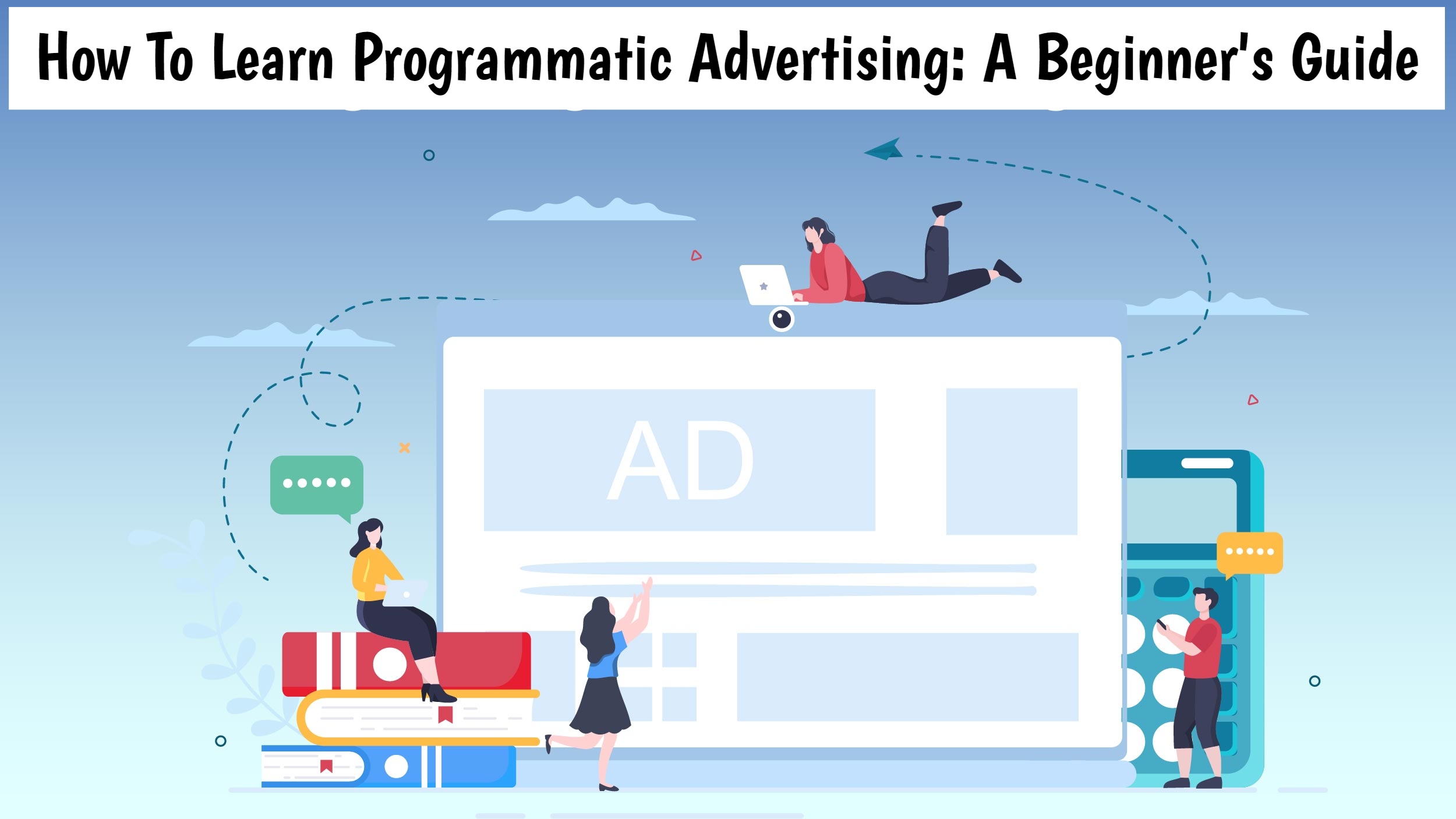How To Learn Programmatic Advertising: A Beginner’s Guide. Instead of purchasing digital campaigns straight from publishers, programmatic advertising allows you to automatically purchase and optimize them. Its goal is to replace human negotiators with AI optimization and machine learning. Increasing efficiency and transparency for the benefit of publishers and advertisers is the aim. Accomplished using real-time auctions, in which advertisements purchased concurrently with a website load. This article is for you if you interested in how to learn Programmatic Advertising as a beginner.
Table of Contents
What is programmatic advertising?
The use of artificial intelligence and machine learning to purchase advertising in real-time as opposed to human bargaining and predetermined rates known as programmatic advertising. To put it simply, programmatic advertising is a way to optimize and automatically buy digital campaigns instead of buying directly from publishers. The goal of AI optimization and machine learning is to replace human bargaining. Improving the efficiency and transparency of both the publisher and the advertiser is the primary goal. Real-time auctions used to achieve this, where ads bought in real-time while a website is loading.
Digital media platforms such as display, mobile, video, and social can all offer programmatic advertising. Programmatic campaigns were previously only available to larger budgets and media agencies. But with the quick development of self-service tools like Match2One. Smaller brands now have more access to this technology and can compete with bigger names directly, eliminating the need for costly middlemen.
How does Programmatic Advertising Work?
The intelligent algorithms that power programmatic advertising are always learning. They connect the data that indicates the audience that an advertiser is looking to reach with their ads with the available advertising space in the online media (SSP).
Advertisers must purchase advertising in real time via digital bidding in order for the buying and selling of advertising space to be effective (DSP). The highest bidder on the Ad Exchange given the opportunity to purchase advertising space in exchange. For their adverts showing up to users who fit their chosen profile using Ad Servers.
Users impacted in real time by adverts that more relevant to their tastes and interests because algorithms cross-reference information. Conversely, this enables marketers to increase the number of people who interact with and convert from their advertisements. Because advertisements delivered to customers in real time based on data like interests, surfing time, and connection device. Advertising approach consequently enables more successful techniques.
How To Learn Programmatic Advertising: A Beginner’s Guide
Key Components of Programmatic Advertising
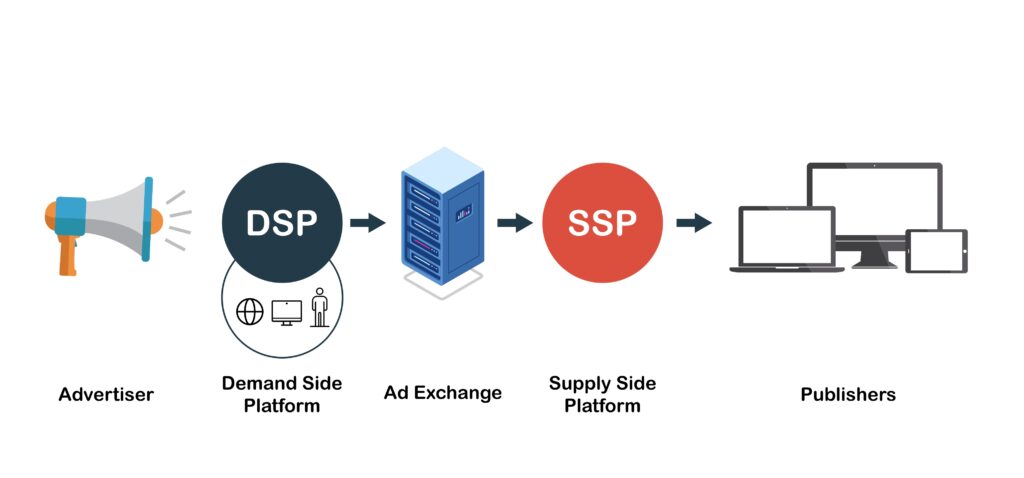
Programmatic advertising comprises numerous components. A fundamental programmatic advertising ecosystem consists of the following four elements:
- Demand-side platform (DSP).
- Supply-side platform (SSP).
- Data management platform (DMP).
- An ad exchange.
The Evolution of Digital Advertising
- Voice Search and Interactive Content
- Mobile-First Marketing
- Search Engine Optimization (SEO)
- Customer Relationship Management (CRM)
- Content Marketing
- Social Media
- Search Ads
Benefits of Programmatic Advertising
Requests-for-proposals (RFPs), discussions, and the manual insertion of orders (IOs) are only a few of the tedious chores and physical labor involved in traditional media procurement. By today’s standards, all of this results in a slow and ineffective process.
By eliminating humans from the tedious and repetitive aspects of the process and substituting them with robots, programmatic advertising provides an effective substitute that speeds up and lowers the cost of ad buying. The primary advantages of programmatic advertising are enumerated below.
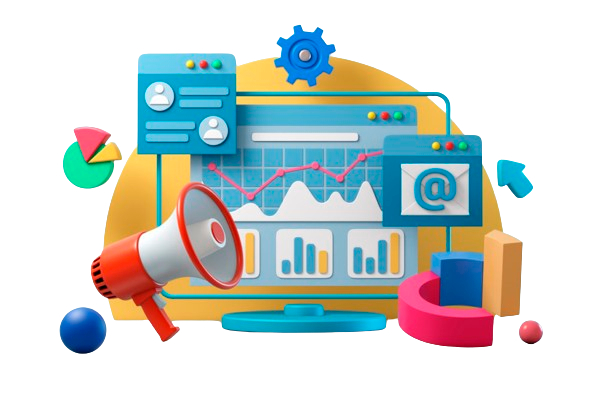
Targeting Strategies in Programmatic Advertising
- First-party data
- Second-party data
- Third-party data
Common Programmatic Targeting Types
- Demographic targeting
- Behavioral targeting
- Contextual targeting
- Geotargeting
- Tech/device targeting
- Retargeting
What is Ad Exchanges in Programmatic Advertising
Ad exchanges are the main component of the programmatic advertising purchase process. Between publishers wishing to sell their inventory and advertisers want to purchase it, an ad exchange serves as a middleman.
How Ad Exchanges Works Programmatic Advertising
- Demand-Side Platforms (DSPs)
- Supply-Side Platforms (SSPs)
- Data Management Platforms (DMPs)
- Real-Time Bidding (RTB)
Ad Formats of Programmatic Advertising
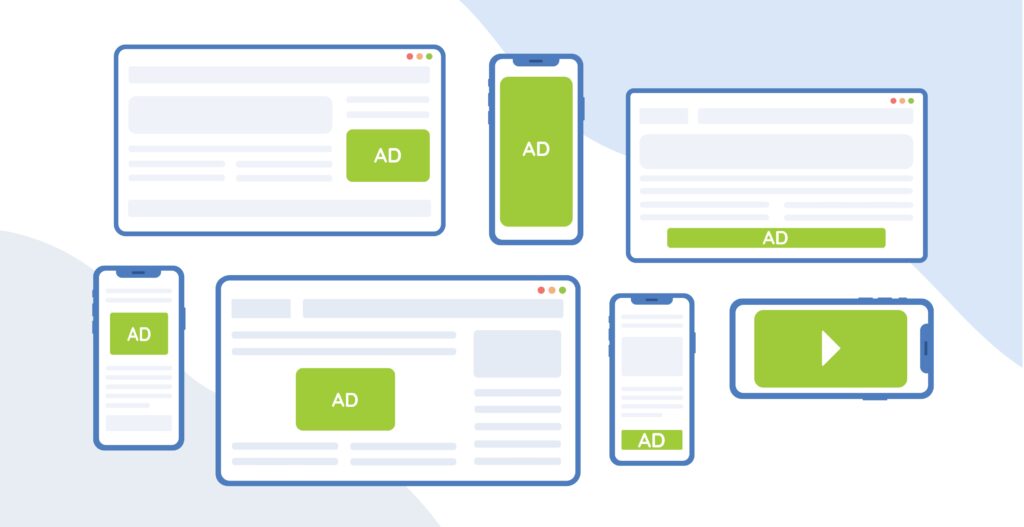
- Display ads
- Static and animated ads
- Rich media
- Sticky ads
- Dynamic ads
- Floating ads
- Calculator ads
- Data collection banners
- High Impact ads
- Native ads
- Video ads
- Click-to-action ads
- Audio ads
- Blended in-game ads
- CTV ads
- DOOH ads
Metrics and Analytics in Programmatic Advertising
Looking at your analytics and the important advertising indicators that assist you in making more informed strategic campaign decisions is the only way to truly know. Even though there are many indicators to consider, some are more important than others. All too frequently, advertisers get misled by focusing on the incorrect metrics!
Here is the list of ad metrics we will cover today:
- Impressions
- Clicks
- Conversions
- Cost
- Revenue
- Reach
- Return on Ad Spend (ROAS)
Programmatic Advertising Trends 2024
- AI
- Social Media
- Audio, DOOH and CTV
How to Optimize Programmatic Campaigns
Before launching your programmatic campaigns, there are various factors to help ensure you’re getting the most out of the platform, your creative, and your landing page, as well as the audiences you’re targeting.
- Data
- Cadence
- Metrics
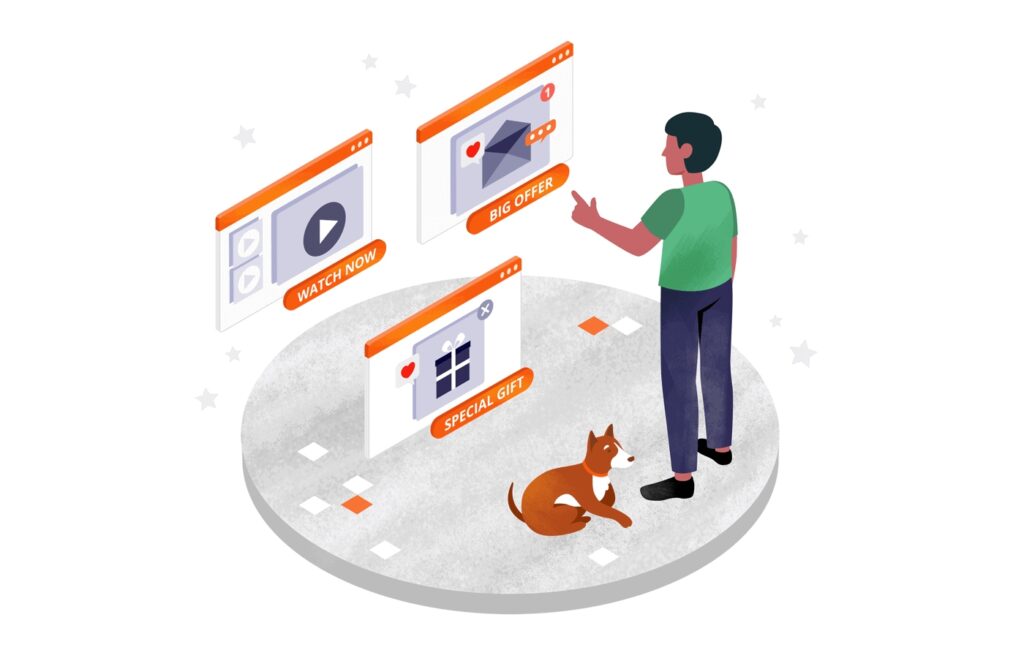
Best Case Studies in Programmatic Success
Case : Hestan Culinary Reports a BOFU ROAS Increase of Over 300% After Switching to Programmatic Advertising
Advertiser: Hestan Culinary
Advertising Agency That Drove Success: Single Grain
Challenge:
- Hestan Culinary faced a major difficulty in the spring of 2022 as their results continued to decrease.
- Customers of this luxury cookware brand made their purchases with consideration and purpose.
- Hestan Culinary made maintaining a remarkable Return on Ad Spend (ROAS) a top focus.
- In order to successfully address the challenge and reverse the performance drop, the organization set out to establish a strategic solution.
Marketing Strategy:
- Single Grain investigated programmatic ads utilizing StackAdapt’s platform after realizing the necessity to resurrect advertising efforts.
- Using a full-funnel strategy, we guided target buyers toward conversion by focusing on a qualified prospecting audience and employing a variety of techniques.
- Both the native and catalog feed ad units that were employed together produced excellent results. But when it came to conversions, the catalog feed performed better and turned out to be the better choice.
- By utilizing StackAdapt’s dynamic retargeting units, our team of programmatic ad professionals was able to achieve a notable and prompt performance boost.
Results:
- In just the first month, retargeting ROAS increased by an astounding 381%, from 1.91 to an astounding 9.20.
Conversions as a whole saw a noteworthy 281% increase. - The remarkable expansion persisted for more than forty-five days following the programmatic advertising campaign’s inception.
AI in Programmatic Advertising

Programmatic advertisers are no strangers to artificial intelligence and machine learning; they have been utilizing AI tools for a considerable amount of time, even prior to ChatGPT becoming well known. AI algorithms make it possible to automate processes like buying and selling advertising inventory that previously required human intelligence. Advertisers can bid on ad space and optimize digital marketing campaigns in real-time using programmatic ad campaigns, increasing efficiency and optimizing return on ad spend (ROAS).
However, generative AI, which manifests itself as text-to-image models like Stable Diffusion and chatbots like ChatGPT, is currently causing a stir in the digital advertising industry. In fact, the Grapeseed Media team created Grape Bot, our very own chatbot. These artificial intelligence platforms—which have the amazing ability to mimic human thought processes, recognize patterns, and carry out predictive analytics—are quickly emerging as a crucial part of contemporary commercial operations.
Best Programmatic Advertising Platforms 2024
- Google Ad Manager
- PubMatic
- AdRoll
- MediaMath
- Supply Side Platform (SSP)
- Adobe Advertising Cloud DSP
- Demand-Side Platforms (DSPs)
Conclusion
In essence, programmatic advertising transforms digital marketing by using artificial intelligence and machine learning to automate real-time ad buying, replacing human negotiations. This shift improves efficiency and transparency for both advertisers and publishers. Core components like Demand-Side Platforms (DSPs), Supply-Side Platforms (SSPs), and ad exchanges work together through real-time bidding, enabling precise audience targeting. Benefits include streamlined processes, reduced costs, and faster campaigns.
Notably, smaller brands can now access programmatic advertising through self-service tools, fostering fair competition. Trends such as AI integration and diverse ad formats like audio and CTV are shaping the future. The success of Hestan Culinary, as shown in a case study, exemplifies the strategic advantages of programmatic advertising, emphasizing impressive return on ad spend (ROAS) and conversions. Staying abreast of metrics, optimization techniques, and using top platforms is crucial for marketers navigating the dynamic landscape of programmatic advertising, a force that continues to redefine how brands connect with their audiences.
Also Read: 10 Best Places to visit in Bali for a Perfect Vacation
FAQ
Programmatic Advertising Trends 2024
- AI
- Social Media
- Audio, DOOH and CTV
Key Components of Programmatic Advertising
- Demand-side platform (DSP).
- Supply-side platform (SSP).
- Data management platform (DMP).
- An ad exchange.
Best Programmatic Advertising Platforms 2024
- Google Ad Manager
- PubMatic
- AdRoll
- MediaMath
- Supply Side Platform (SSP)
- Adobe Advertising Cloud DSP
- Demand-Side Platforms (DSPs)

